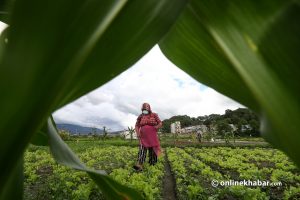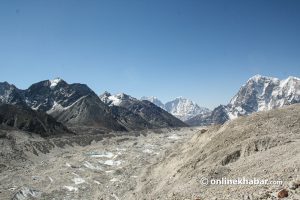Nepal is ranked the world’s fourth most vulnerable country to climate change impacts. The Department of Hydrology and Meteorology (DOHM) in 2017 studied Nepal’s climatic trends from 1971 to 2014 and found that the country’s average annual maximum temperature climbed by 0.056 degrees celsius. Climate change’s negative impacts can be distinct in a variety of sectors across the country, particularly in the wildlife sector. With a wide altitudinal range from 60 to nearly 8849 m, coupled with heterogeneous climatic and topographic conditions, Nepal is considered a global wildlife hotspot, with 1.1 per cent of the world’s known fauna. More than 23 per cent of the land area has been declared as a protected area in Nepal.
Climate change has popped up as a top threat to wildlife in recent decades across the globe. The current global climate shift has already begun to affect wildlife assemblages and ecosystem dynamics, and Nepal’s wildlife is no exception. Climate-induced events have impacted Nepal’s wildlife both within and outside the protected areas. The principal impacts of climate change on Nepal’s wildlife include: shifting in spatial distribution and suitable habitats of species along the altitudinal gradients; reduction in population size of species due to illicit trade and poaching; increased forest fire, floods, wildlife diseases and invasive species; and shrinkage of habitat and local extinction. Although all wild species, from small to large, are vulnerable to climate change in Nepal, few research works have been documented to establish the impact of climate change on wildlife such as on one-horned rhinoceros, Asian elephant, Himalayan musk deer, blue sheep, Bengal tiger, snow leopard, common leopard and bats.
Examining documented scientific research
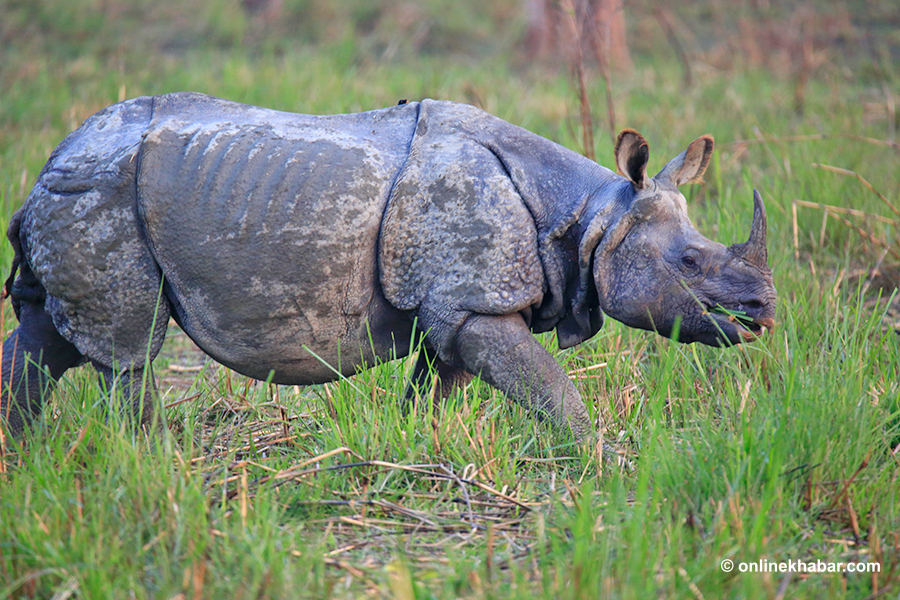
A study report published in 2020 by Ganesh Pant and his team revealed that the one-horned rhinoceros populations in Nepal are moderately vulnerable to the possible impacts of climate change and they may be impacted indirectly as a result of extreme weather events such as floods and droughts, food shortages caused by the spread of invasive plant species, and anthropogenic pressures such as hunting, poaching, human-wildlife conflict, and pollution. Similarly, a study published in 2021 by SanjanThapa’s team on the distribution impacts of five species (greater short-nosed fruit bat, great Himalayan leaf-nosed bat, intermediate horseshoe bat, Leschenault’s rousette, greater false vampire) in the Himalayas under climate change found that the potential distribution range for greater false vampire and greater short-nosed fruit bat is expected to expand by an average of 30% and 15%, respectively while that for, Leschenault’s rousette, intermediate horseshoe bat and the great Himalayan leaf-nosed bat are expected to dwindle by an average of more than 18%, 15% and 4%, respectively.
The potential habitat of snow leopard and blue sheep will be reduced with future climate change, according to a study published in 2016 by Achyut Aryal and his team on the future distribution and impacts on snow leopard and blue sheep under climate change. The predicted distribution of snow leopard will be reduced by 14.57% in 2030 and by 21.57% in 2050 after including the predicted distribution of blue sheep. A study published in 2012 by Jessica L Forrest’s research team on the vulnerability of snow leopards to climate change revealed that the substantial reduction of the alpine zone will result in a decrease in the current snow leopard habitat in Nepal by up to 40% under high emission scenarios.
In the same way, Sandro Lovari and his colleagues published a research report in 2013, focusing on the food habits and competition of two big cats–the snow leopard and the common leopard–under climate change and found that the impacts of climate change have been skyrocketing in Nepal’s mountains, resulting in an increase in common leopard habitat while the habitat of the snow leopard will be significantly reduced. In 2018, Rajapandian Kanagaraj and his research team published a study report on Asian elephant range shift in Nepal and India as a result of climate change, finding that 41.8% of the current 256,518 km2 of habitat will be strayed by the end of the century due to climate-induced effects and anthropogenic pressures. Ganga Ram Regmi and his team published a study report on Assamese monkeys in 2018 that revealed the future distribution of their habitat was heavily influenced by climate parameters such as precipitation, annual temperature, and seasons. Pramod Lamsal and his team published a study in 2018 on the effects of climate change on musk deer habitat distribution, which found that by 2070, 29.47% of suitable habitat for musk deer will be reduced.
Climate change as a threat
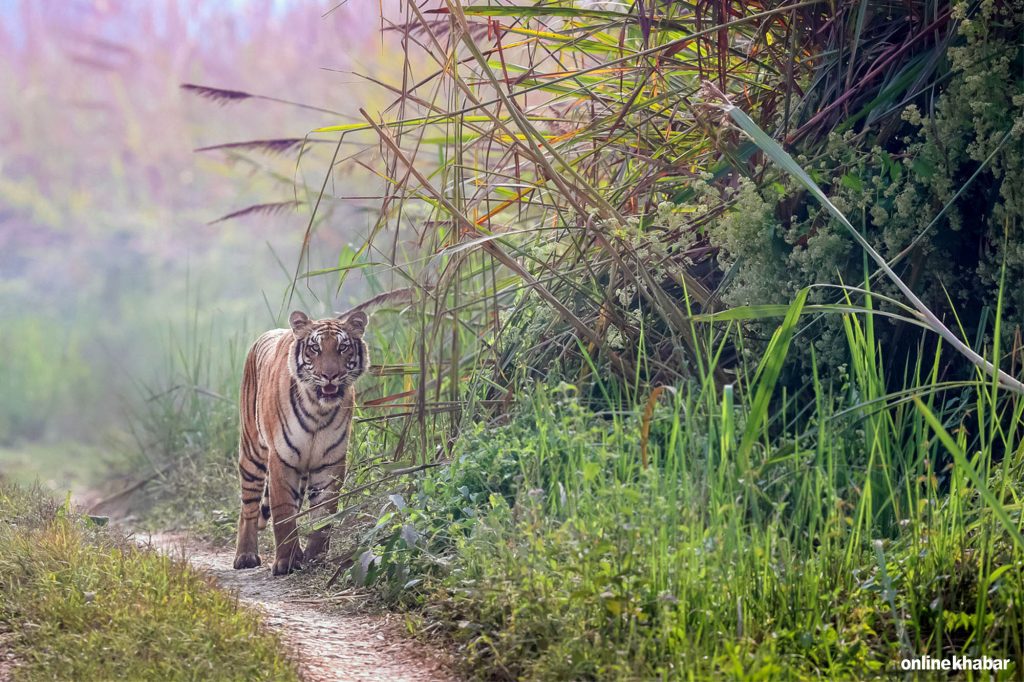
Aside from the studies mentioned above, there is ongoing evidence to indicate the impacts of climate change on Nepali wildlife, particularly in the Terai plains. Prolonged droughts, changes in rainfall patterns, and greater floods are all consequences of climate change, which have a direct impact on wildlife habitat and their distribution patterns. Few among many examples include the drowning of one of the last remaining populations of blackbuck (40 out of 281) in 2015 from Krishnasaar Conservation Area. Similarly, Chitwan National Park, which is the stronghold and provides refuges to the second largest population of one-horned rhinoceros in the world, is affected by the adverse effect of climate change along with many flagship species to lesser-studied small mammals due to the flash floods in Rapti and Narayani rivers. Wild mammals, particularly swamp deer, spotted deer, wild water buffalo, one-horned rhino, and blackbuck, have been killed or displaced on a regular basis because of heavy floods across the Terai protected area.
The Bengal tiger was observed at 3,165 metres in Ilam and 2,500 metres in Dadeldhura districts in 2020 as wildlife experts speculate one of many reasons may possibly be the impacts of climatic change. As a result of habitat fragmentation and the effects of climate change, the human-wildlife conflict has been on the rise in recent years. Wild mammals such as Asian elephants, common leopards, Bengal tigers, one-horned rhinoceros, bears, and wild boars are the common species involved in human fatalities and injuries.
Krishna Prasad Acharya’s team examined the trend of wildlife attack records in Nepal from 2010 to 2014 and found that the majority of frequent leopard attacks on humans happened outside protected areas, primarily around human settlements, during April, the driest month of the year. This has really put challenges on park managers, concerned stakeholders including the government who have been working for decades to recover multiple species before they are only remembered in the pictures. Nepal has been achieving historic success in recovering multiple species whether it is one-horned rhinoceros or Bengal tiger or blackbuck or other species. It is also equally important to maintain such success, in the long run. However, factors like climate change have been the most pressing threat that could definitely stop the successful history of wildlife conservation in the world putting an end to decades of struggle in species conservation and ecosystem restoration.
The way forward
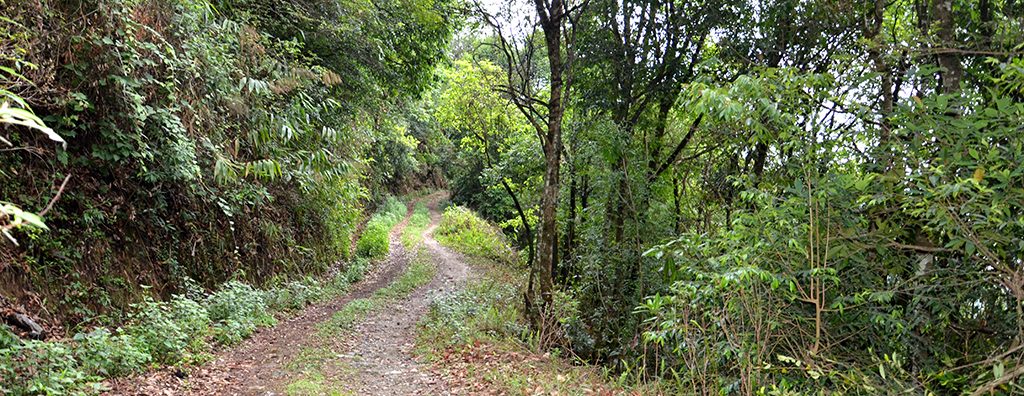
Forests play an integral role in minimising the negative impact of climate change by regulating the carbon cycle, balancing the ecosystem, promoting healthy wildlife habitats, and providing essential goods and services for sustainable growth and livelihood. Research works have revealed that the world’s forests stored about twice as much carbon dioxide as they emitted between 2001 and 2019. So, to safeguard the wildlife habitat and minimise the impact of climate change on them, the foremost step is to oppose actions that lead to deforestation or forest degradation throughout Nepal. Rigorous field-based research should be carried out to identify the potential habitats of threatened species and enhance the habitat management practices like controlling invasive species, managing suitable vegetation, constructing fences, wildlife corridors, artificial ponds and water holes in appropriate areas.
A robust and species-specific study on the effects of climate change can aid in the prediction of future habitat and distribution of species, allowing for timely management measures and interventions. Climate change mitigation and adaptation strategies include minimising the human footprints on the environment and promoting electrical vehicles, solar energy, improved cooking stoves, and banning plastic production should be adopted at both local and national levels throughout the country. Human activities determine the future of wildlife, so we should lessen activities that contribute to global climate change and create a win-win situation for both humans and wildlife. We are not far enough to lose wildlife like a pygmy hog and Indian chevrotain if the factors that cause climate change are not stopped. It is now the right time for the government of Nepal to think, act, implement and monitor on recovering the species and restore ecosystem making sound, effective and robust climate policy specific on the species at a landscape level.
Bhuwan Singh Bist is an MSc Wildlife Management and Biodiversity Conservation student at the School of Forestry and Natural Resource Management and Nishan KC is a BSc Forestry final year student at the Institute of Forestry, Pokhara Campus, Nepal.






